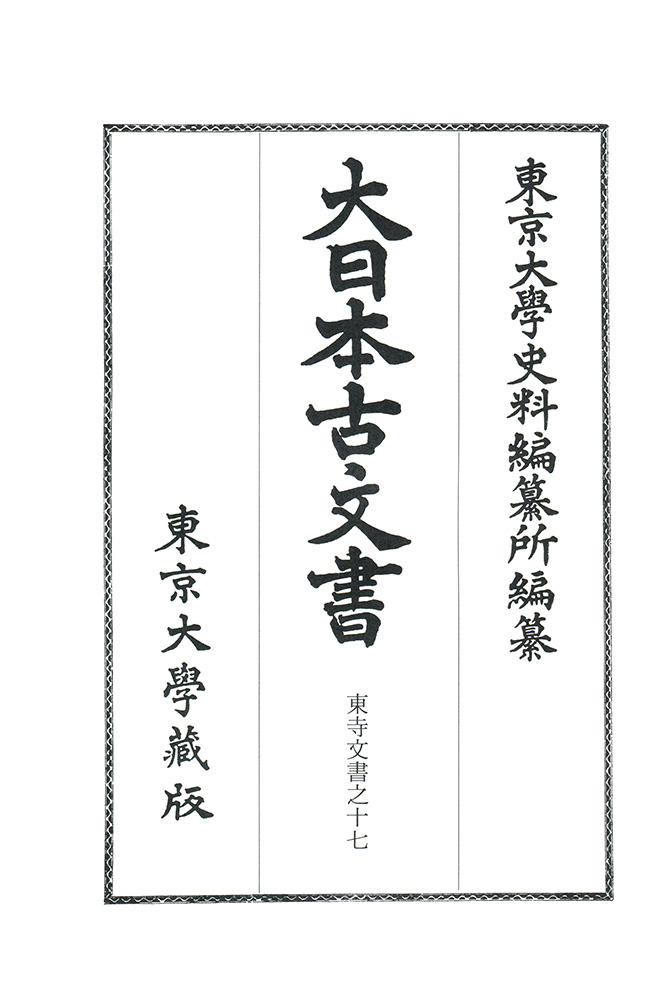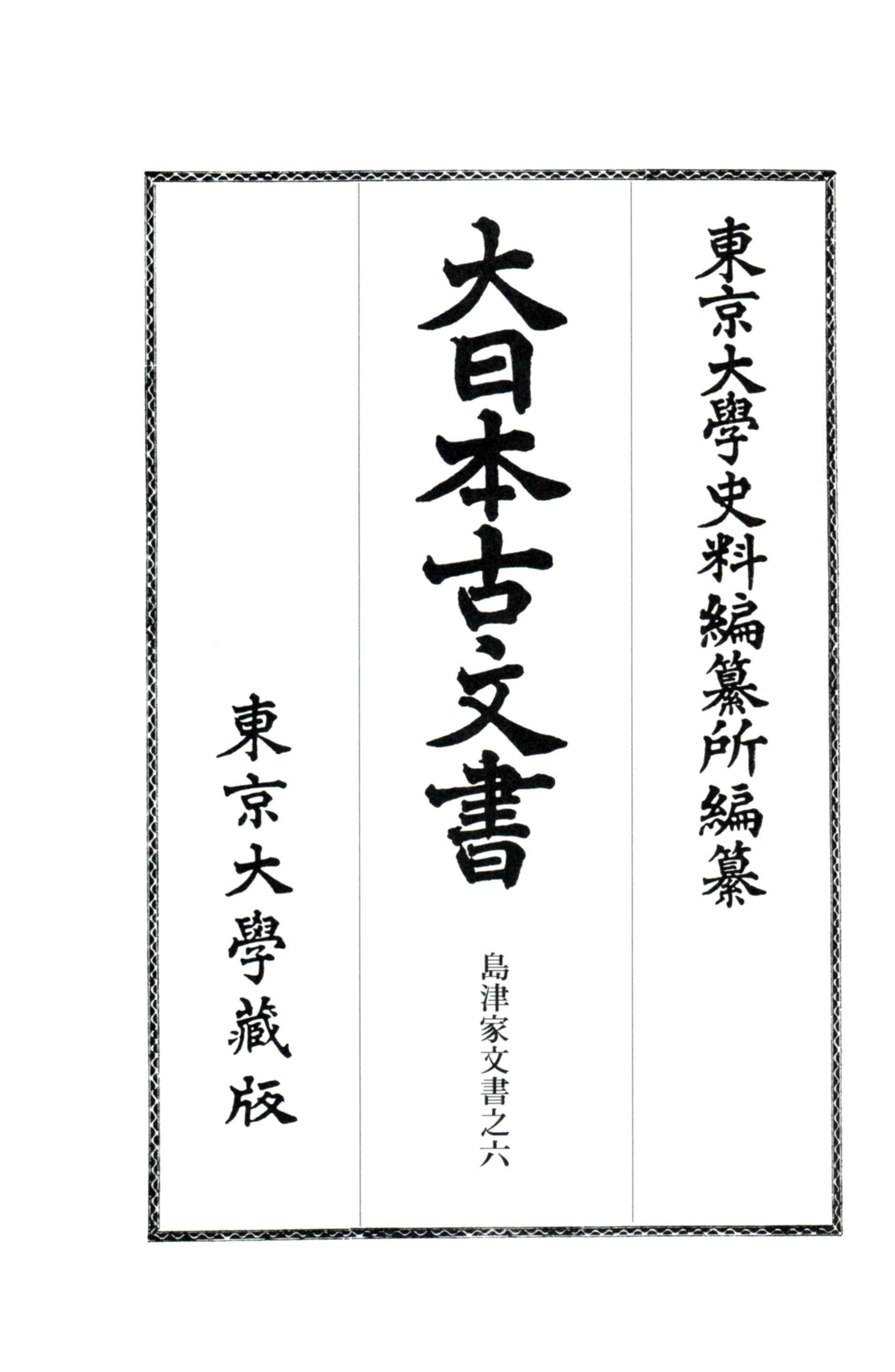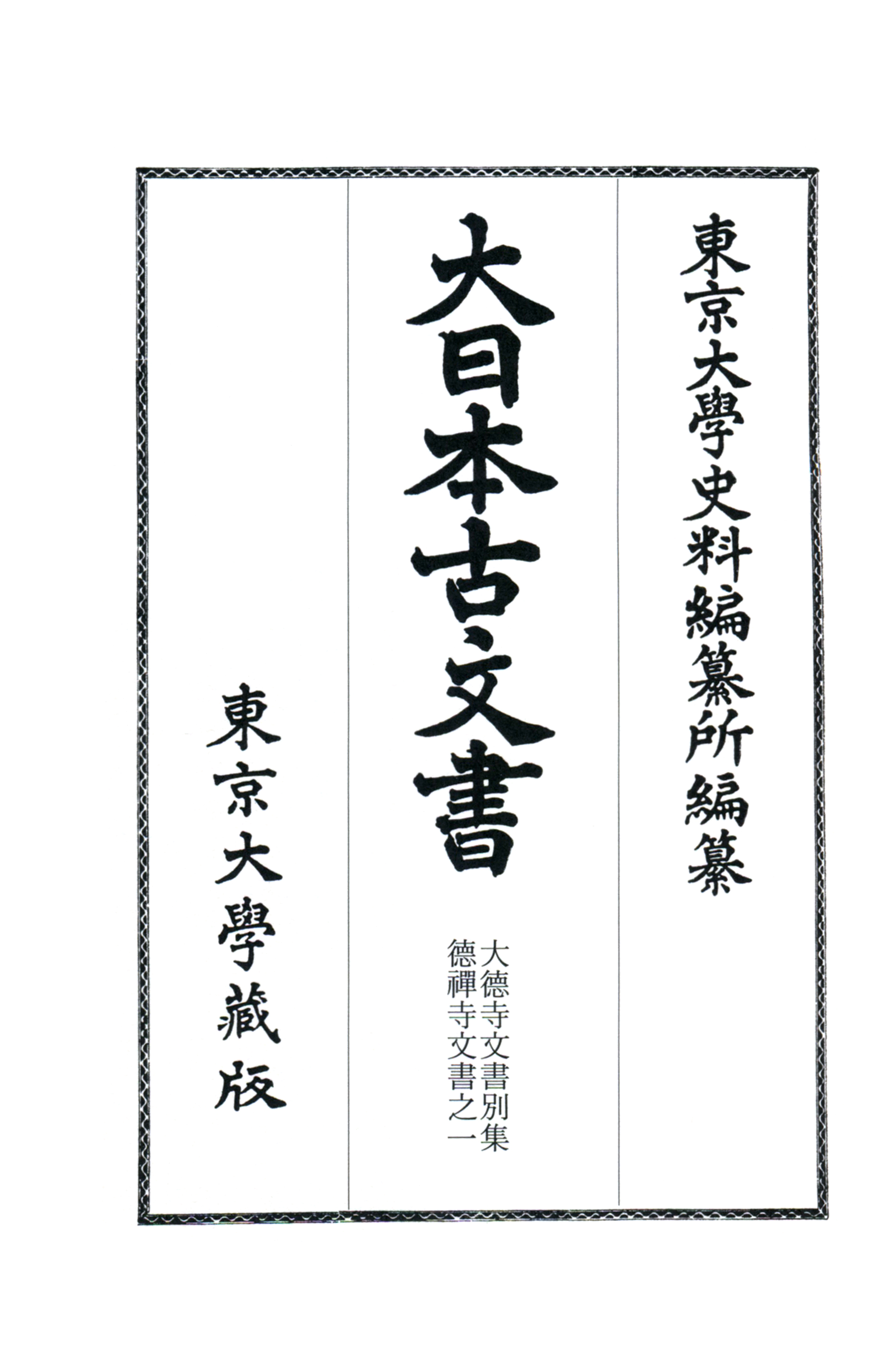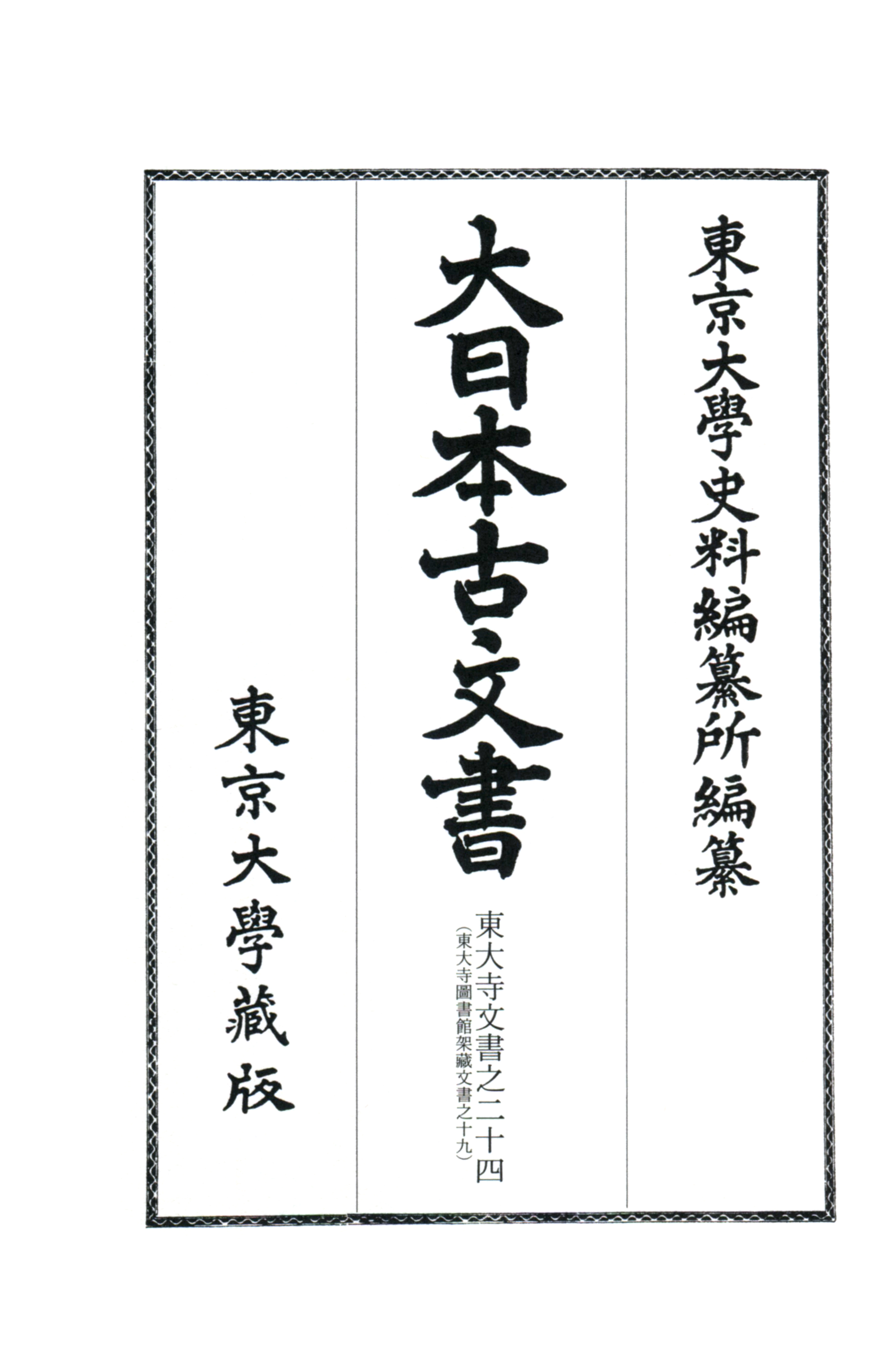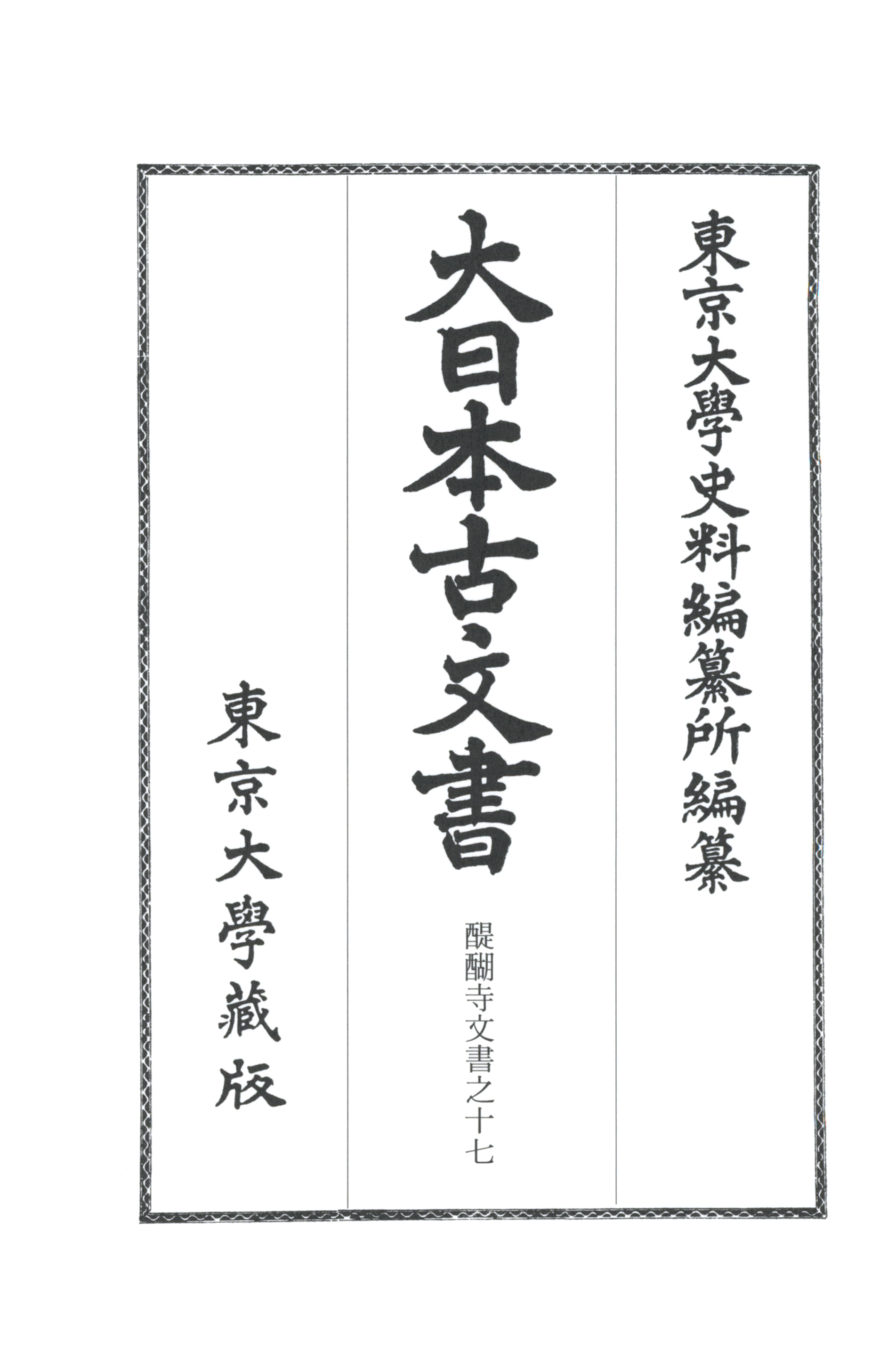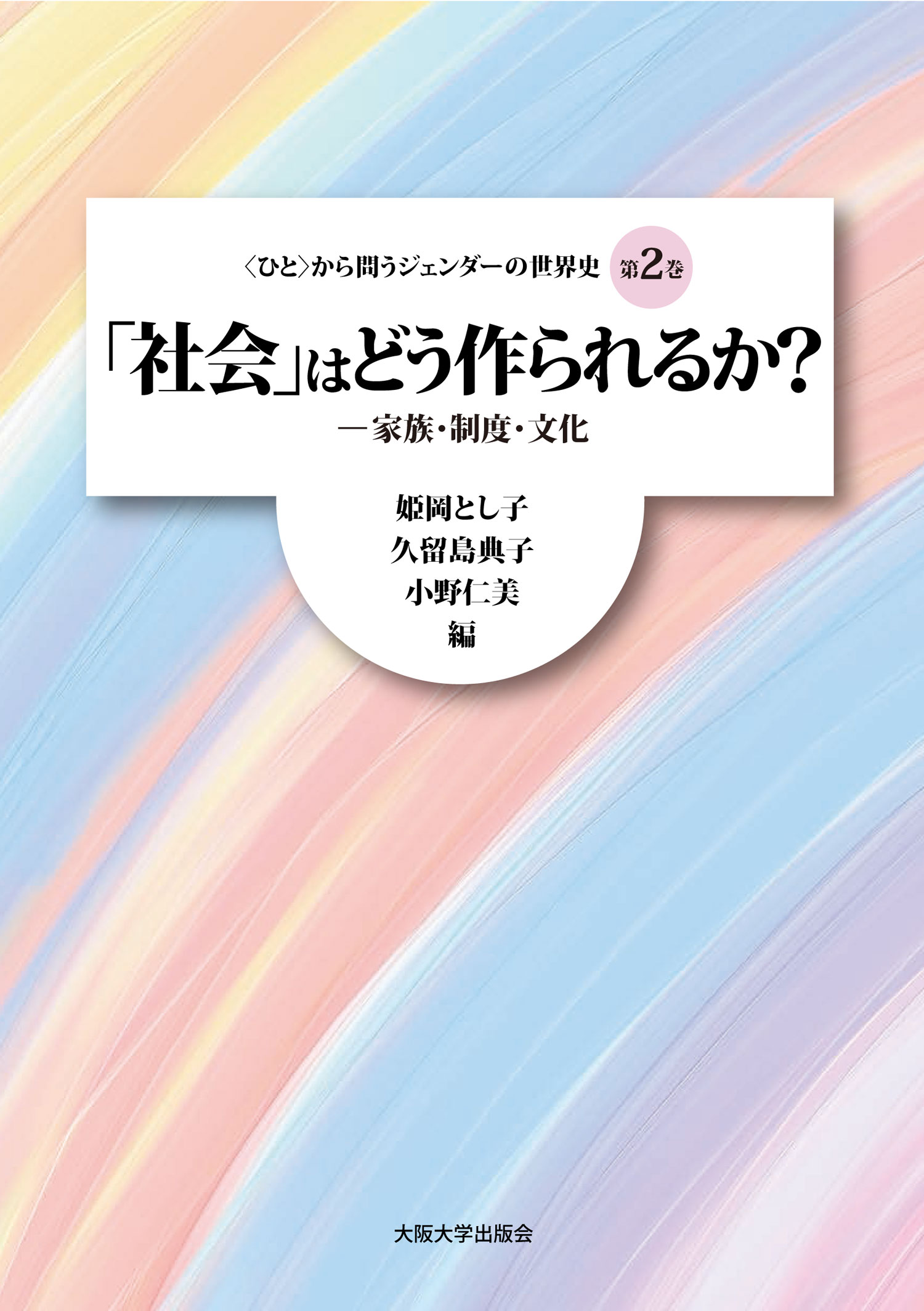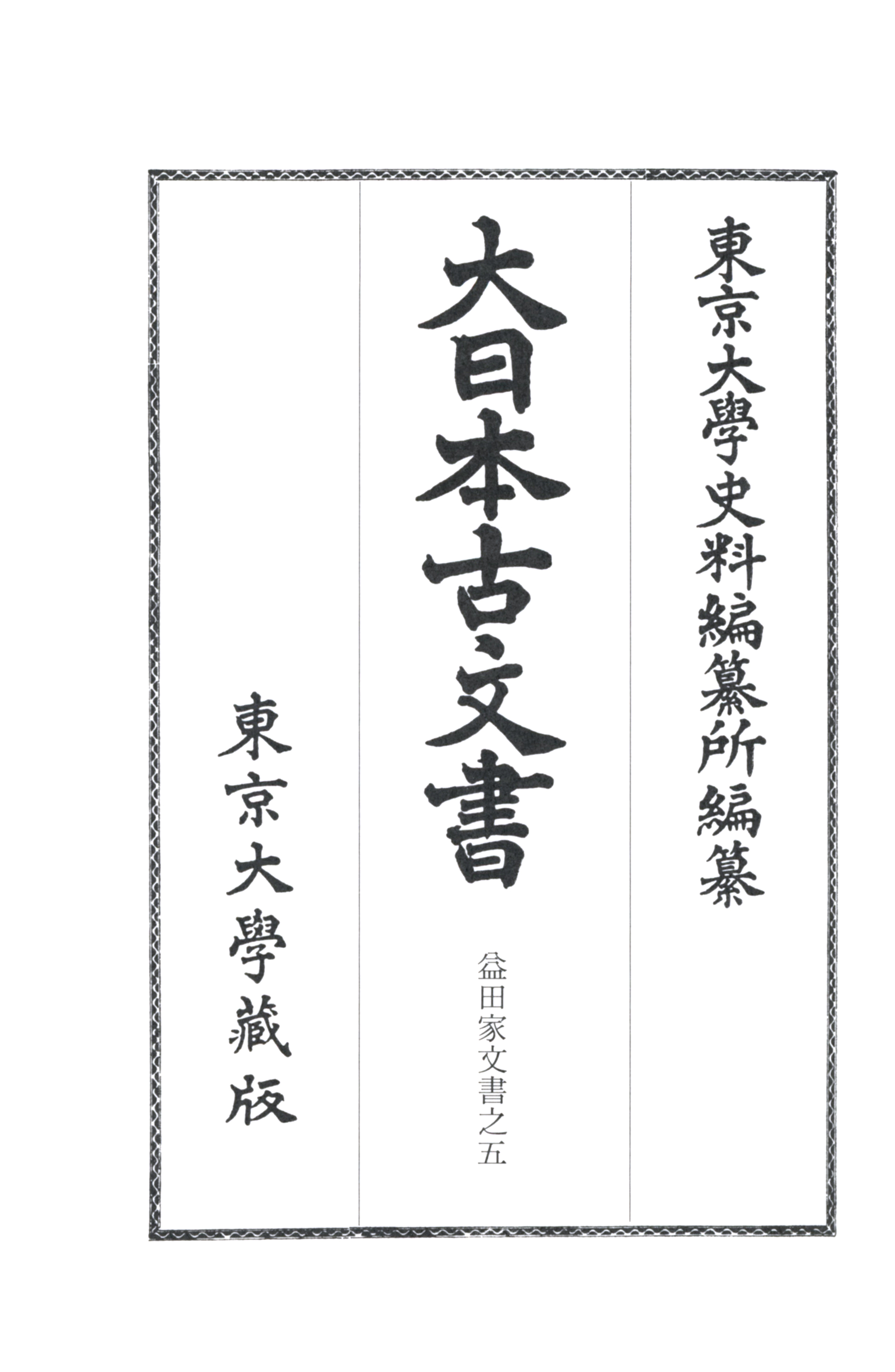
Title
Dai-Nihon Komonjo Iewake dai 22, Masuda-ke Monjo (Old Documents of Japan: Temple and Family Collections 22: Documents of the Masuda Family, Vol. 5)
Size
404 pages, A5 format
Language
Japanese
Released
April 23, 2021
ISBN
978-4-13-091295-2
Published by
University of Tokyo Press
Book Info
See Book Availability at Library
Japanese Page
Vol. 5 of Documents of the Masuda Family one of the collection of historical sources in the series Old Documents of Japan dealing with the documents of a warrior family.
The documents preserved by the Masuda family, who held positions as chief retainers of the Mōri family of Hagi domain in perpetuity, number more than 18,000 in total. Some of these were sorted and brought together by the Masuda family during the early modern period in a collection of 117 handscrolls collectively called the “Treasured Writings of the Masuda Family,” and it is these that make up Documents of the Masuda Family. For the Masuda family in the early modern period, the medieval period, when, before submitting to the Mōri family, they had close connections with the Ōuchi family and the Muromachi shogunate in their capacity as a powerful local warrior family based in western Iwami province (around the present-day city of Masuda in Shimane prefecture), was an important period in the family’s proud history. Therefore, “Treasured Writings of the Masuda Family” includes all of the medieval documents from the larger collection, more than 800 in number. Another important period was the period from the time of the fall of the Ōuchi family, which could be said to have caused a crisis that put in peril the very survival of the Masuda family, until they became retainers of the Mōri family and obtained a stable position within the early modern régime, a period typified by the family head Masuda Motonaga, and all the documents from this period, too, are included in “Treasured Writings of the Masuda Family.”
In Old Documents of Japan, importance is placed on the perceptions and perspectives of the traditional arrangement of historical sources, and as a rule sources are compiled in accordance with their existing groupings. Of course, in historical research there is also a need to examine sources in chronological order, and therefore the Historiographical Institute has made public two databases, “Union Catalogue of Old Documents of Japan” and “Full-Text Database of Old Documents” (https://wwwap.hi.u-tokyo.ac.jp/ships/) so as to make it easier to view groups of sources in multifaceted ways, which was difficult to do in the past.
With the publication of the present volume, all of the medieval documents among the documents of the Masuda family have now been published. The appeal of the entire five-volume collection of these documents lies in the fact that they shed light on the world of regional warriors during the medieval period from various angles. Large numbers of medieval documents have survived in leading temples and shrines in the Kinki region, but not that many medieval documents relating to warrior families have been preserved by such families. Among such document collections, the documents of the Masuda family are outstanding in both quantity and quality among medieval documents from the San’in region. In addition to important sources from the Kamakura period, such as land registers of Iwami province, sources from the fifteenth and sixteenth centuries are especially abundant, and they include sources that are without parallel, such as correspondence received from people associated with the Muromachi shogunate when members of the Masuda family accompanied the Ōuchi family on two visits to Kyoto, and agreements among family members and neighbouring warrior families to raise an insurrection. During the Nanbokuchō period the Masuda family lost almost all the original documentary evidence necessary for having its land rights confirmed and only just managed to have its land rights confirmed by the Muromachi shogunate on the basis of copies of the documents; perhaps because of this experience, the family subsequently never discarded any documents. Thereafter they seem to have strictly adhered to the fundamental rule of collecting all documents related to their landholdings. As a result, some quite unusual documents have survived, and it is here that the appeal of these documents lies. They include not only documents of the Masuda family but also Kamakura period documents pertaining to middling and minor warrior families in the Iwami region. Although reading these documents entails some difficulties, they enable the reader to gain a glimpse of the world of the documents of warrior families in the medieval period.
(Written by KURUSHIMA Noriko, Professor Emeritus, Historiographical Institute / 2021)



 Find a book
Find a book


